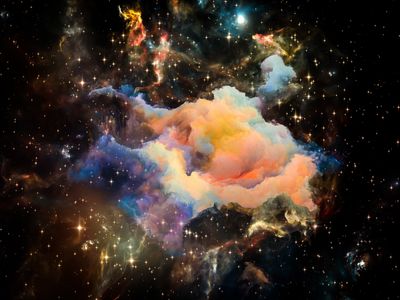Intro to Space Curriculum

Concepts and Projects
1. What is Space?
- Objective:
- Introduce students to the concept of space, its vastness, and key features.
- Topics Covered:
- What is space? Understanding the vacuum of space, stars, planets, and galaxies.
- Key terms: Solar system, orbit, gravity, and atmosphere.
- Earth's position in the solar system and the concept of day and night.
- Hands-On Activity: Create a Solar System Model
- Students will make a model of the solar system using various materials (e.g., styrofoam balls or clay for planets).
- Discuss the size, order, and orbits of planets around the Sun.
2. Gravity and Orbits
- Objective:
- Learn how gravity works in space and how it affects orbits.
- Topics Covered:
- What is gravity? How it works on Earth and in space.
- How objects orbit planets, moons, and the Sun.
- Understanding weightlessness and why astronauts float in space.
- Hands-On Activity: Orbit Simulation
- Create a simple gravity-and-orbit demonstration using a stretched-out fabric (or trampoline) and small balls.
- Drop a ball (representing a planet or moon) into the center and watch how other objects orbit around it.
3. Spacecraft and Satellites
- Objective:
- Explore the types of spacecraft and satellites and their purposes.
- Topics Covered:
- Different types of spacecraft: Rockets, satellites, space stations, and probes.
- The role of satellites in communication, weather tracking, and GPS.
- Space stations like the ISS and how astronauts live and work in space.
- Hands-On Activity: Build a Satellite Model
- Students will create a simple model of a satellite, discussing its key components like solar panels, antennas, and cameras.
- Present the design and explain the satellite's purpose.
4. Space Exploration and Famous Missions
- Objective:
- Introduce students to major space missions and the history of space exploration.
- Topics Covered:
- Key missions: Apollo Moon landings, Mars rovers, Hubble Space Telescope.
- The role of space agencies: NASA, ESA, and private companies like SpaceX.
- The future of space exploration: Mars colonization, space tourism, and beyond.
- Hands-On Activity: DIY Rocket Launch
- Students will build and launch simple water bottle rockets to simulate space missions.
- Discuss the challenges of getting to space, re-entry, and landing.
5. Life in Space - Challenges and Opportunities
- Objective:
- Understand what it's like for astronauts to live and work in space.
- Topics Covered:
- How astronauts eat, sleep, and exercise in microgravity.
- The challenges of space travel: Radiation, temperature extremes, and isolation.
- How spacecraft are designed to support human life (e.g., life support systems).
- Hands-On Activity: Design a Space Station Interior
- Students will design a simple interior layout for a space station, focusing on essentials like living quarters, exercise areas, and labs.
- Discuss what astronauts need to stay healthy in space.
6. The Future of Space Travel and Exploration
- Objective: Explore future possibilities in space travel, such as colonizing other planets.
- Topics Covered:
- The potential for human missions to Mars and beyond.
- Space tourism and private space companies like SpaceX and Blue Origin.
- Advanced spacecraft: Electric propulsion, reusable rockets, and space habitats.
- Hands-On Activity: Design Your Own Spaceship
- Students will design and build a model of a futuristic spaceship.
- Present their designs, explaining what makes their spacecraft suitable for long-duration missions.
Assessment and Learning Reflection:
- After each lesson, students will complete a brief worksheet reflecting on what they learned and how their projects turned out.
- At the end of the curriculum, students can present their spaceship designs or participate in a launch competition with their water bottle rockets.
Learn Aerospace
Email us: contact@learnaerospace.com
This website uses cookies.
We use cookies to analyze website traffic and optimize your website experience. By accepting our use of cookies, your data will be aggregated with all other user data.